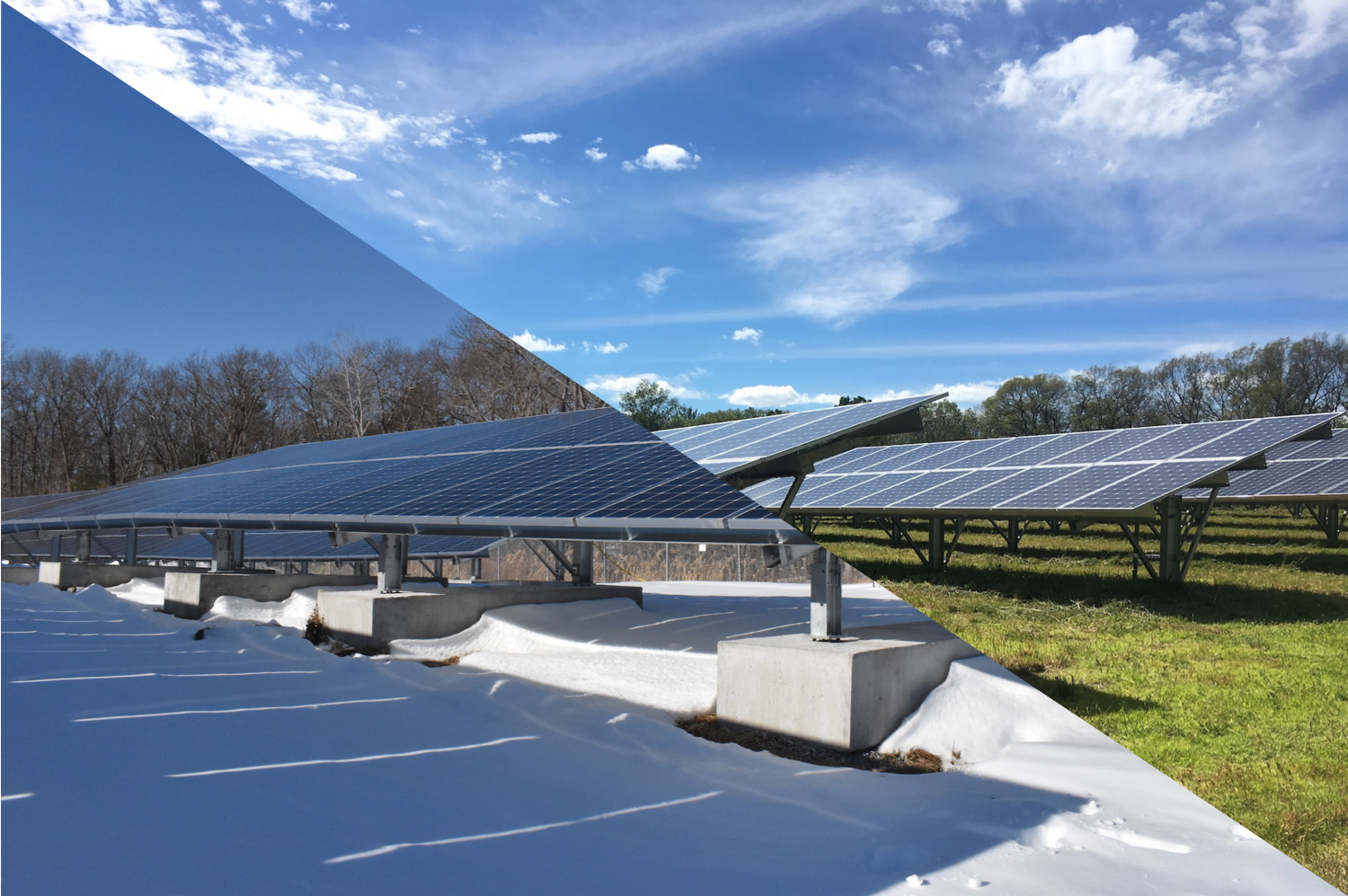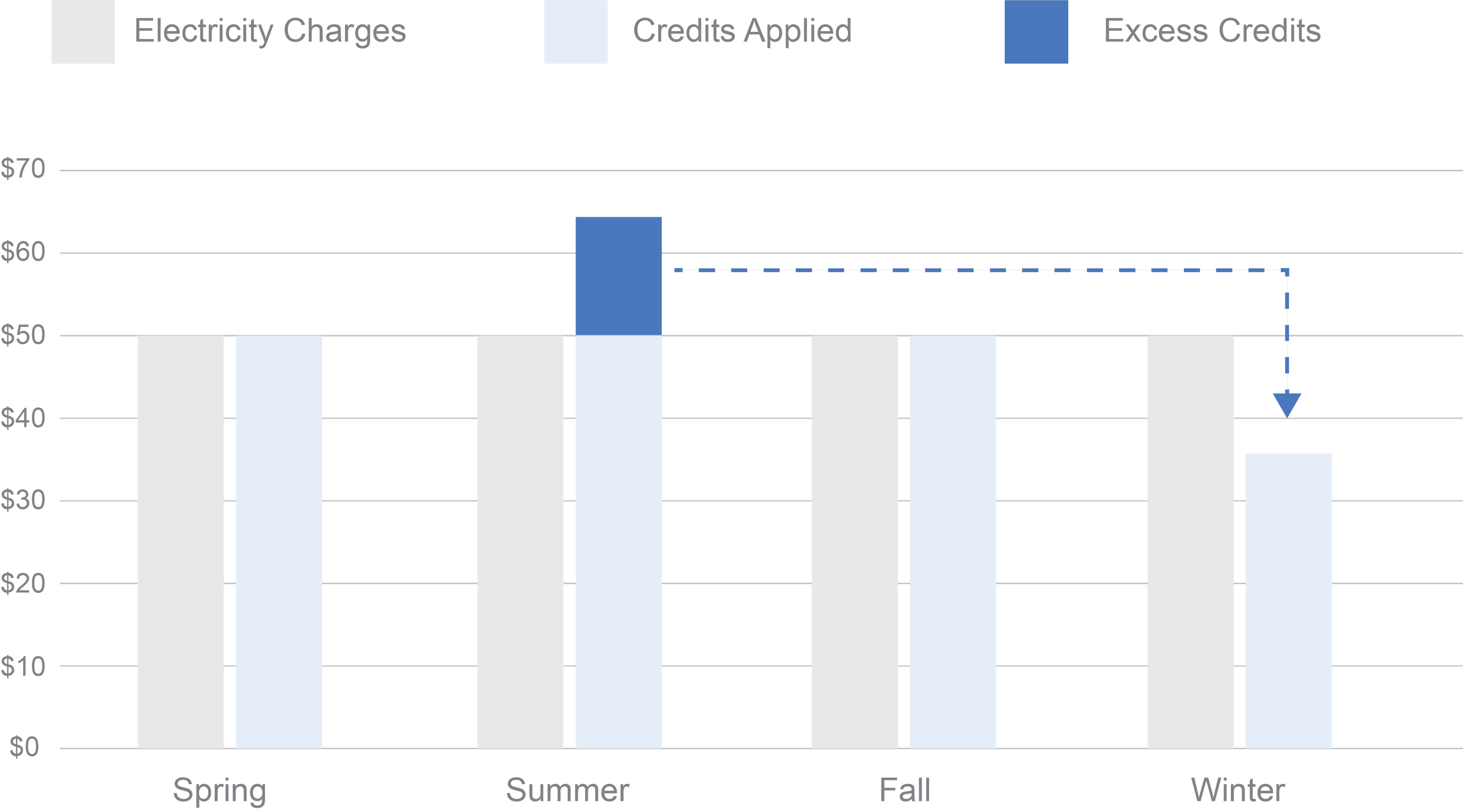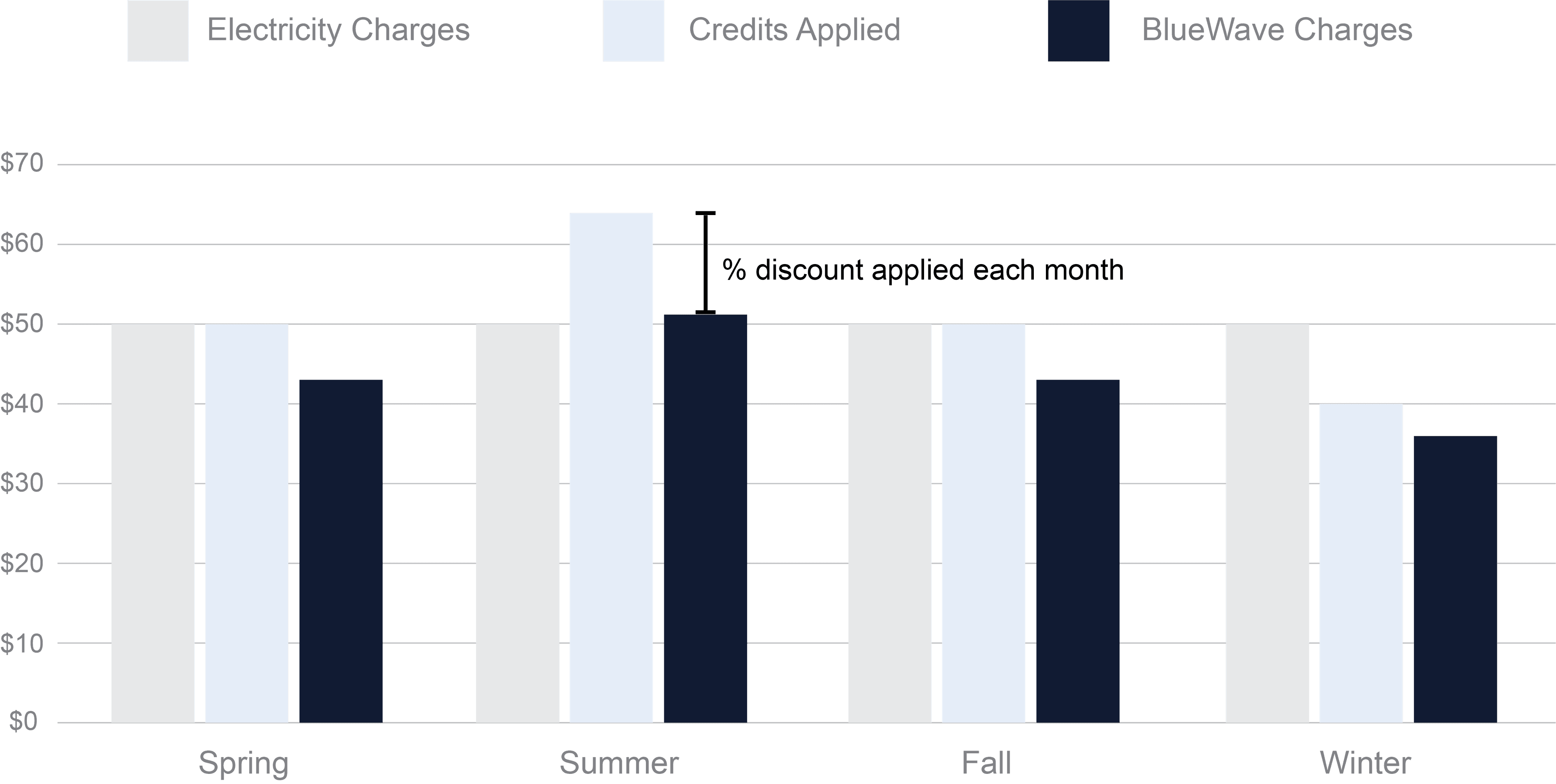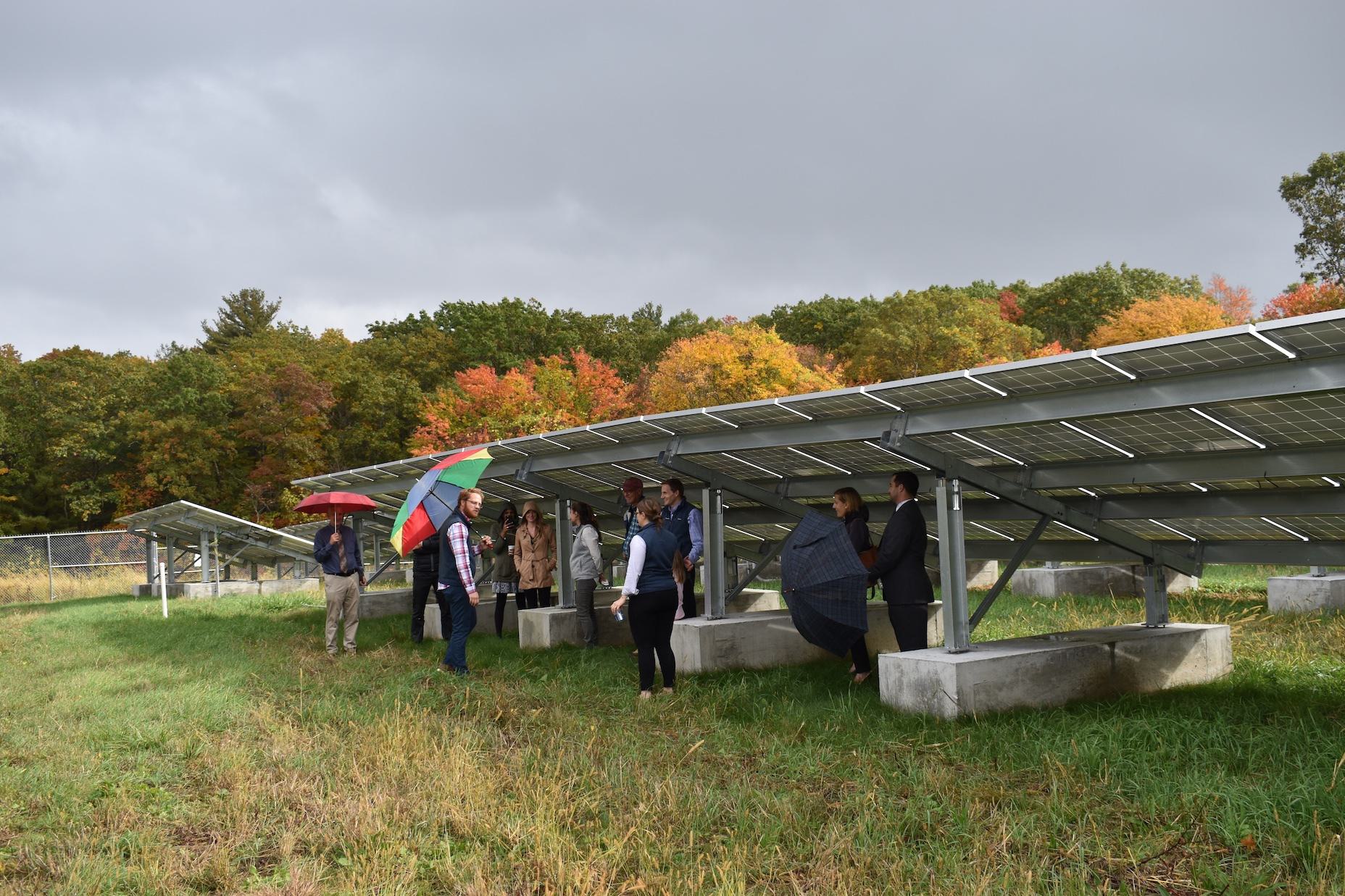
Summer is in full swing, and for many, this is exciting news. The brighter, warmer days invite outdoor adventures, bathing suits, beach days, and barbecues. Gardens are in full bloom, and many of us have packed away our winter boots and heavy coats for the colder days ahead.
Summer also bears exciting news for solar. The longer, sunnier days of summer mean that solar farms across New England will be reaching their maximum energy production over the next few months. This phenomenon is called seasonality, and it explains why solar production can vary from month to month.
On the surface, the effect of the seasons on solar is easy to grasp: summer’s longer days mean more sunlight which means more energy production from our solar panels in comparison to the shorter, cloudier days of winter. However, when you dive a little deeper into the nuances of seasonality, a lot of questions can come up. How does seasonality affect my community solar credits? What is the effect of more or less solar production on my community solar bill? How will my utility bill change with the seasons? Does seasonality affect my savings?
Summer vs. Winter
Let’s start with the Summer. Here are the main factors that impact solar production during the brighter, warmer months.
- Longer days. This one is simple: on a given summer day there is more overall sunlight resulting in more energy production.
- Different angle of the sun. The sun sits higher in the sky in the summer. This means that there will be more direct sunlight hitting the solar panels, increasing energy production.
- Weather conditions. Clearer, cloudless summer days are perfect for solar production in comparison to the cloudier, snowier days of the winter.
Alternatively, winter's darker, colder days will result in slowed solar production.
How does seasonality affect my community solar subscription?
Okay, so solar production varies from season to season—good to know. But what does this all have to do with your community solar subscription? Recall that your subscription is sized to offset as much of your electricity use as possible of the course of a year. But the number of solar credits you generate each month is directly tied to solar production. So, during winter months, when the overall energy generated at your farm is lower, your subscription doesn’t produce as many credits. Alternatively, in the summer months, when production at your farm is higher, your subscription will produce more credits than usual. In fact, during the summer, it is often the case that your subscription produces more credits than are needed to offset your electricity bill. In these cases, your utility will “bank” these excess credits and apply them to other months to make your credits more consistent throughout the year. Check out the graph below which shows the seasonal fluctuation in credits received and what happens to those excess credits.

Excess credits from the summer will carry into the winter months when production is at its lowest.
How does seasonality affect my utility and BlueWave bills?
BlueWave bill:
Your monthly BlueWave bill charges you for the number of solar credits you generate in a given month. (Need a quick fresher on how community solar billing works?) In the winter, your BlueWave bill will be smaller since your community solar farm produces less solar energy. In the summer, your BlueWave bill will be higher due to higher production. It is possible that your summer BlueWave bill might even be higher than your utility bill. Not to fear, you will still get your fixed discount on those credits and the excess credits will be applied to your utility bills in the winter months when your subscription produces fewer credits. You can think of your summer bills as prepaying part of your winter bills. And no matter what, this whole system was designed to allow you to save money on electricity over the course of the year.
Utility bill:
It is likely that in the winter, your subscription will not produce enough community solar credits to entirely offset your utility bill. While your utility will apply any leftover credits from the summer to offset your bills, there may still be months where you owe both BlueWave and your utility money. In this case, your utility bill will still be reduced, just not to $0. Still, you will be saving money on electricity since your solar credits are always discounted at a fixed rate. Here’s an example of how it could break down.
Say you have a fixed discount rate of 10%. In January, you generate $100 of solar credits but your electricity bill is $120. In this scenario, you will owe your utility $20 ($120 - $100) and you will owe BlueWave $90 ($100 x 10% discount). Although you are paying both your utility and BlueWave, you are still saving $10 on electricity for January.

Example monthly payment scenario between your utility and BlueWave.
There are other reasons your utility bill might vary from season to season as well. For example, your own energy consumption habits might vary depending on the season. You may use your lights and heating more in the winter, whereas you may use your air conditioning more in the summer. These variations depend on your specific household and BlueWave takes these variations into account when we size your subscription. We look at your average annual electricity use and make sure your subscription will generate enough credits to achieve savings every year.
How does seasonality affect my savings?
It is important to note that seasonality does NOT affect your overall annual savings. Your subscription is sized to account for seasonal variation ensuring that the amount of credits your subscription generates over the course of the year is enough to offset your annual electricity.

In the summer, your BlueWave bill increases, but so do your savings on those credits. In the winter, you'll see less savings on your credits, but your BlueWave bill will also be less.
That being said, over the course of the year, the dollar value of your savings may change from month to month. Since you generate more credits in the summer, you will have a higher dollar value of savings than in the winter. The bottom line is, no matter the month, you will still receive your fixed discount on your credits and throughout the year you can expect to save between 5 and 10% on your electricity costs.
So, if you receive a higher than normal bill from BlueWave in the summer, it’s not necessarily a billing mistake. We’re charging you (at a discount!) for the increased solar production at your community solar farm. Solar production, and by extension your solar subscription, is dynamic.

BlueWavers on one of our solar sites during an autumn day
For some customers, it helps to just be on autopay to avoid confusion over monthly production and billing variations. But as always, we’re here to answer any questions that may arise about your subscription. Give us a shout if you have any questions at customercare@bluewavesolar.com.
*Updated July 15th
Curious to learn more about community solar?


